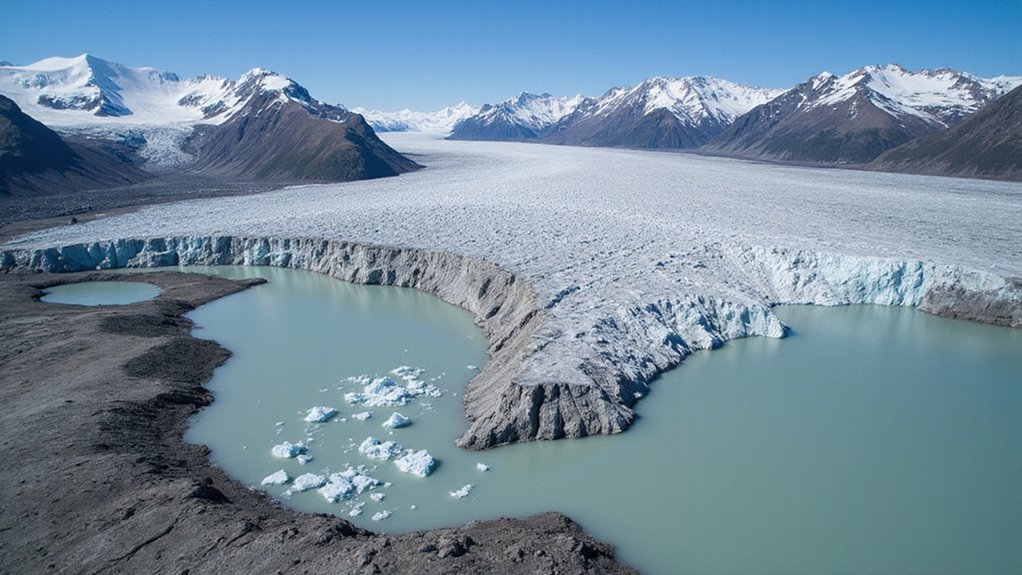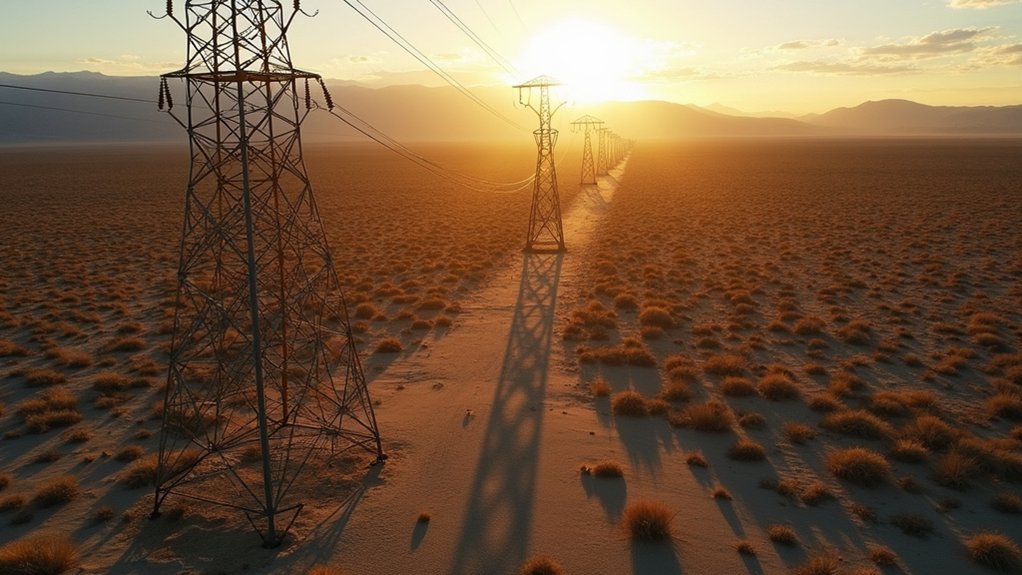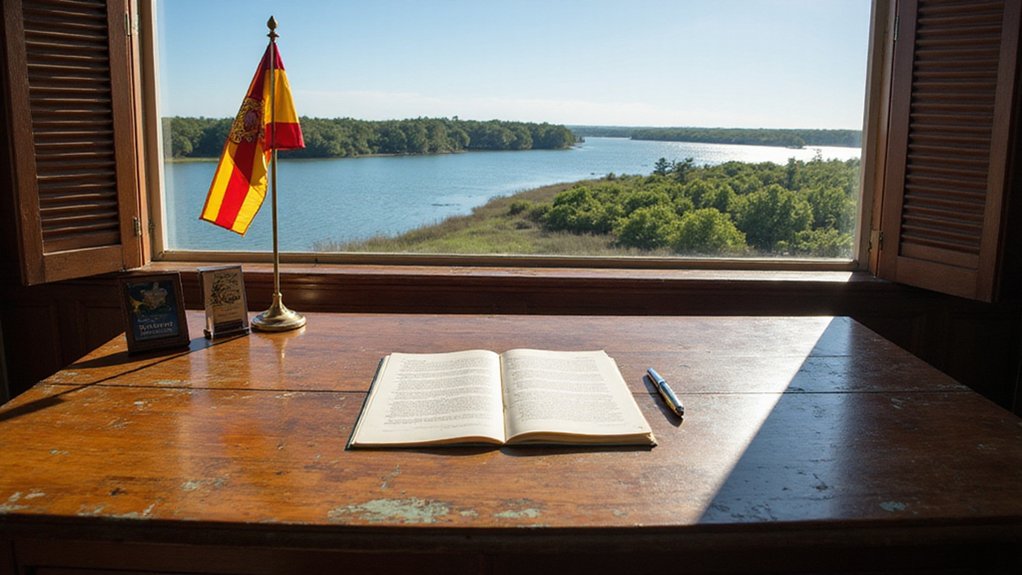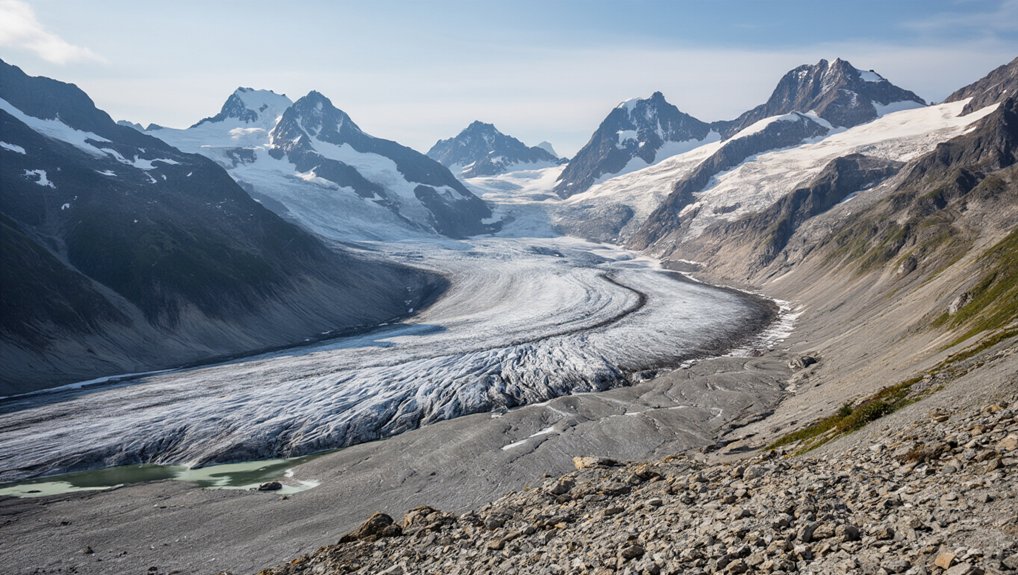While the world bickered about carbon credits and electric cars, thousands of glaciers quietly died. Up to 10,000 of them, gone. Scientists can’t even agree on the exact number because, well, tracking dying ice turns out to be complicated.
Thousands of glaciers vanished while we argued about carbon credits. Nobody counted the bodies.
Anderson Glacier in Washington state earned the dubious honor of being America’s first officially dead glacier in 2015. Iceland went full theatrical in 2023, creating an actual iceberg graveyard. Talk about a funeral nobody wanted to attend.
The culprit? Take a wild guess. Global temperatures keep climbing, CO2 levels hit 428 parts per million in early 2025, and glaciers melt faster than they can rebuild. Simple math, really. With extreme weather events becoming increasingly severe worldwide, glaciers face additional threats beyond just rising temperatures. Even if humanity somehow manages to limit warming to 1.5 degrees Celsius—spoiler alert, we probably won’t—these ice giants are toast. They’ve crossed tipping points that make their survival about as likely as finding a snowball in hell.
The Alps, Andes, Himalayas, Alaska, Pacific Northwest—pick a mountain range, any mountain range. They’re all hemorrhaging ice. Switzerland’s glaciers hit historic lows. The Himalayas might lose two-thirds of their ice this century. That’s not a typo. Two-thirds. Earth’s glaciers shed 58 billion tonnes of ice annually, contributing to over a fifth of global sea-level rise. Meanwhile, in America’s national parks, drowning kills more visitors than any other cause—826 deaths since 2007—a grim reminder that water, whether frozen or flowing, demands respect.
Here’s the kicker: glaciers are basically frozen time capsules. Ancient atmospheres, volcanic eruptions, temperature records from thousands of years ago—all locked in ice. When glaciers die, those archives vanish forever.
Scientists scramble to extract ice cores before it’s too late, racing against melting that reveals long-buried terrains and artifacts.
The consequences hit harder than abstract climate data. Hundreds of millions depend on glacial meltwater for drinking, farming, and electricity. No glaciers means no water security. It means more landslides, more floods from bursting glacial lakes, more everything-bad-you-can-imagine.
Reduced snowfall and wonky precipitation patterns aren’t helping. Heatwaves deliver knockout punches to already struggling ice. The glaciers that took millennia to form disappear in decades.
The irony? By the time most people notice they’re gone, it’ll be way too late to mourn what we’ve lost.
References
- https://www.climatecentral.org/climate-matters/year-of-the-glacier-2025
- https://www.panish.law/nevada/deaths-in-us-national-parks/
- https://www.livescience.com/planet-earth/climate-change/1st-glacier-declared-dead-from-climate-change-seen-in-before-and-after-images-earth-from-space
- https://www.nps.gov/aboutus/mortality-data.htm
- https://www.lacrux.com/en/klettern/never-so-many-crevasses-mountain-emergency-statistics-2022/








